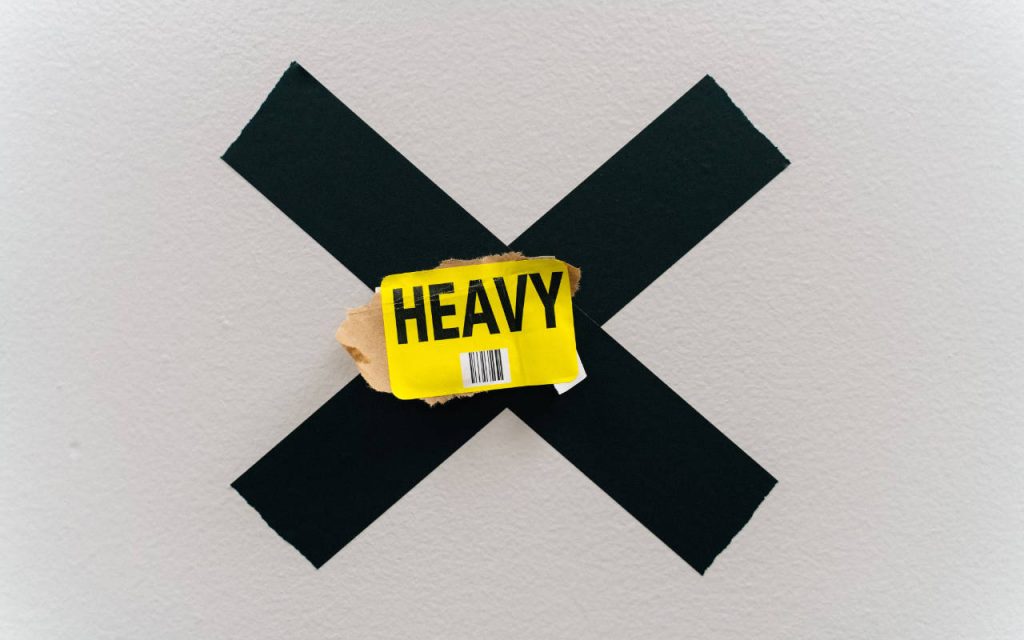Weighing stuff is easy. Right? You get a scale, and see how much it weighs. Job done!
Well, sure – that’s fine if you’re doing something like baking a cake to a recipe. But when you’re talking about packaging materials like polythene, that’s not always the case.
Calculating the weight of polythene can be more complex than it seems at first glance, because there are more than a few variables at play. You’ve got the key sizing dimensions to consider, as well as polythene duty (or thickness) to think about. But you’ve also got to think about density, which is variable depending on the masterbatch that the polythene was extruded from.
Learn more about the physical properties of polythene
Polythene packaging is typically made from LDPE, or low density polyethylene – but can also be made of MDPE (medium density polyethylene). This difference in density impacts the overall weight of polythene packaging, but MDPE can sometimes be used for a similar strength profile at lower thicknesses than LDPE, trading off the weight a little bit.
At this point, you might be wondering why this is important. There are two reasons why you need to be aware of this; one being the Plastic Packaging Tax (PPT), and the other being calculating packaging costs and shipping weights at scale.
This is always important stuff to know for anyone with a product-led business – but at a certain size of business and scale of output, this stuff becomes massively impactful.
So, how do you calculate polythene weight?

Polythene weight calculator
Virgin LDPE with no additives weighs 910 kg per cubic metre. We’ll use this measure as a baseline to translate the weight of a 1×1 metre sheet at different duties.
Bear in mind that this is very tricky to get accurate. This polythene weight calculator doesn’t take additives into account, as is based on pure, medical-grade polythene. So please, take the following guidelines with a pinch of salt – and remember, they are guidelines, not hard and fast rules.
If you’re looking for a more complete understanding of the weight you should expect for your desired polymer blend, give us a call to talk to a polythene expert.
| LDPE duty | Thickness (microns) | Thickness (gauge) | Approx. weight (grams) of 1m x 1m sheet |
| Ultra light | 8 | 32 | 7 |
| 10 | 40 | 9 | |
| 11 | 45 | 10 | |
| 13 | 50 | 12 | |
| Light | 15 | 60 | 14 |
| 20 | 80 | 18 | |
| 25 | 100 | 23 | |
| 38 | 150 | 35 | |
| Medium | 63 | 250 | 57 |
| 75 | 300 | 68 | |
| 100 | 400 | 91 | |
| Heavy | 125 | 500 | 114 |
| 150 | 600 | 137 | |
| 175 | 700 | 159 | |
| 200 | 800 | 182 | |
| Heavy/super heavy | 250 | 1000 | 228 |
| Super heavy | 300 | 1200 | 273 |
Learn more about polythene thickness
Knowing these approximate weights can help you better judge shipping costs and limitations, and work out what PPT you’ll owe on 100% virgin polythene packaging. Using 1×1 metre as a guide, you can scale this up, or adjust for layflat tubing or polythene bags (assuming no additional welds or gussets).
What does this mean in practical terms?
1000 gauge polythene weighs approximately 228g per square metre.
Or, let’s try an example. Imagine a 1.5 by 3 metre, super heavy duty (1000 gauge) furniture bag, for a large three seater sofa. Opened out, this bag would cover an area of 9 metres.
Using our calculations, an 1000 gauge LDPE bag of this size would weigh approximately 2 kg. That’s not an insignificant amount of weight to factor into your shipping cost, especially with other packaging to take into consideration.
Like we said – this is all intended as a general guideline, and the weights for your desired polymer blend or forming process may vary. If you need to know more about calculating the weight of polythene, then let’s talk!
Need to reduce your polythene weights and costs?
There are several ways you can do this;
- Optimise protection with minimal materials
- Reduce gross weight by using thinner MDPE instead of LDPE
- Use right-sized bags and sheets
This can lead to lower shipping and logistics costs, with a reduced carbon impact, too. Find out more about using right-sized packaging in our blog post on reducing your packaging costs. And remember, your total packaging system and final pallet load will be more than just the polythene you use, so it;s important to take it all into account.
Talk to a polythene expert.
Get in touch here, or call us on 01773 820415 to speak with a polythene expert. We’ll help you find a packaging solution that works for your products and logistics arrangements.


